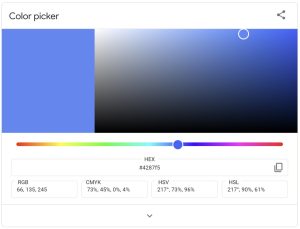Far too many would-be SEO champions fake an understanding of internal linking without fully maximizing the opportunity for value. Because these links pay dividends around-the-clock with virtually no maintenance, it behooves every company to learn more than just the basics. Knowing to add a bit of anchor text and make it one-way helped your search ranking in 2013, but not today. Best practices have changed, and your best bet is to keep up.
Consider the Architecture of Your Site When Determining an Internal Link Structure.
Why most search engine optimization “experts” group their most important pages together but away from recent articles about topics on those pages is beyond us. This does not make sense in the modern link building space, but most online marketers still consider this 2012 technique valid.
Plan the architecture of your site in a way that groups your most important topics together with ongoing content. This creates a tight-knit group of dynamic pages that relate to each other and index more easily. Groupings like this improve your authority and relevance within a keyword space infinitely faster than overlooking these obvious connections. Make sure that the links that come from your website are fully maximized; after all, the links that you give to your own content are the easiest to create.
Stay Active in Various Communities to Build Your Internal Link Profile.
How exactly does staying active in your LinkedIn groups bolster your internal link profile? As much as you can try to build your internal links yourself as suggested in the above tip, you move infinitely faster when you have the help of your colleagues. Here is how you get it.
Any network that is worth its weight in bits makes sure that active members receive credit for internal links for all positive communications (and some negative). For instance, your Facebook post likes, shares and reposts in groups all add to your search engine profile for that linking group. Your link profile grows even faster if you make sure to maximize your internal link structure in each article. Every time that article gets shared on the platform, those internal links show up again, and they all count. Relationship building is one thing, and very important. However, your activity on social networks now has a quantifiable effect in your internal like profile on the major search engines.
Social networks also offer the opportunity for some “wink wink” back and forth. Nothing need be stated; there is no conspiracy or illegality going on here. You simply gravitate towards other content that you like and make sure your likes and shares are known. Hopefully, they return the favor. Because the companies that you seek have nothing to do with your industry, the links on both sides are one-way, adding to their relevance ever so slightly. Relationships of mutual respect lead to a baseline of social activity that you can count on for your upcoming articles.
– The Special Case of Google+
Although Google+ never broke through as a viable social network, it is still part of Google. Your circles here are perhaps the most important business connections you have other than your LinkedIn profile when it comes to the potential for internal link building. Google of course considers social activity on Google+ more readily than social activity on any outside site, so if you have not made Google+ circles and groups a priority, then change your priorities immediately.
The proper use of Google+ circles also gives you the ability to increase your local rankings as well as your organic rankings. Separate your circles through geography with an emphasis on your hometown if you have a physical storefront or if your target audience gathers itself in one part of the world specifically.
Quality is the key. Do not join every Google+ group that you see that possibly relates to you. If you get no traction there, quit the group.
Keep Track of the Link Profiles of Your Deep Web Pages.
You accentuate your efforts even more if your deep web pages each has their own subtle take on your keyword profile. By the time that you write one hundred pieces on any topic, assuming competence of course, the major search engines and human readers will likely view you as the authority on that topic. However, do you want to cast a wider net and expand your opportunity?
Visibility is great; ubiquity is better. Rank for many synonyms and corollary keyword profiles through a breakdown of each deep page of internal links. For instance, if you find out through your analytics that your sales page appeals more to individuals in Houston, then localize the content and internal links to Houston in articles about their favorite product. You keep your overall internal linking profile while adding a precision anchor text for ubiquity in important spaces.
Digital & Social Articles on Business 2 Community(57)





